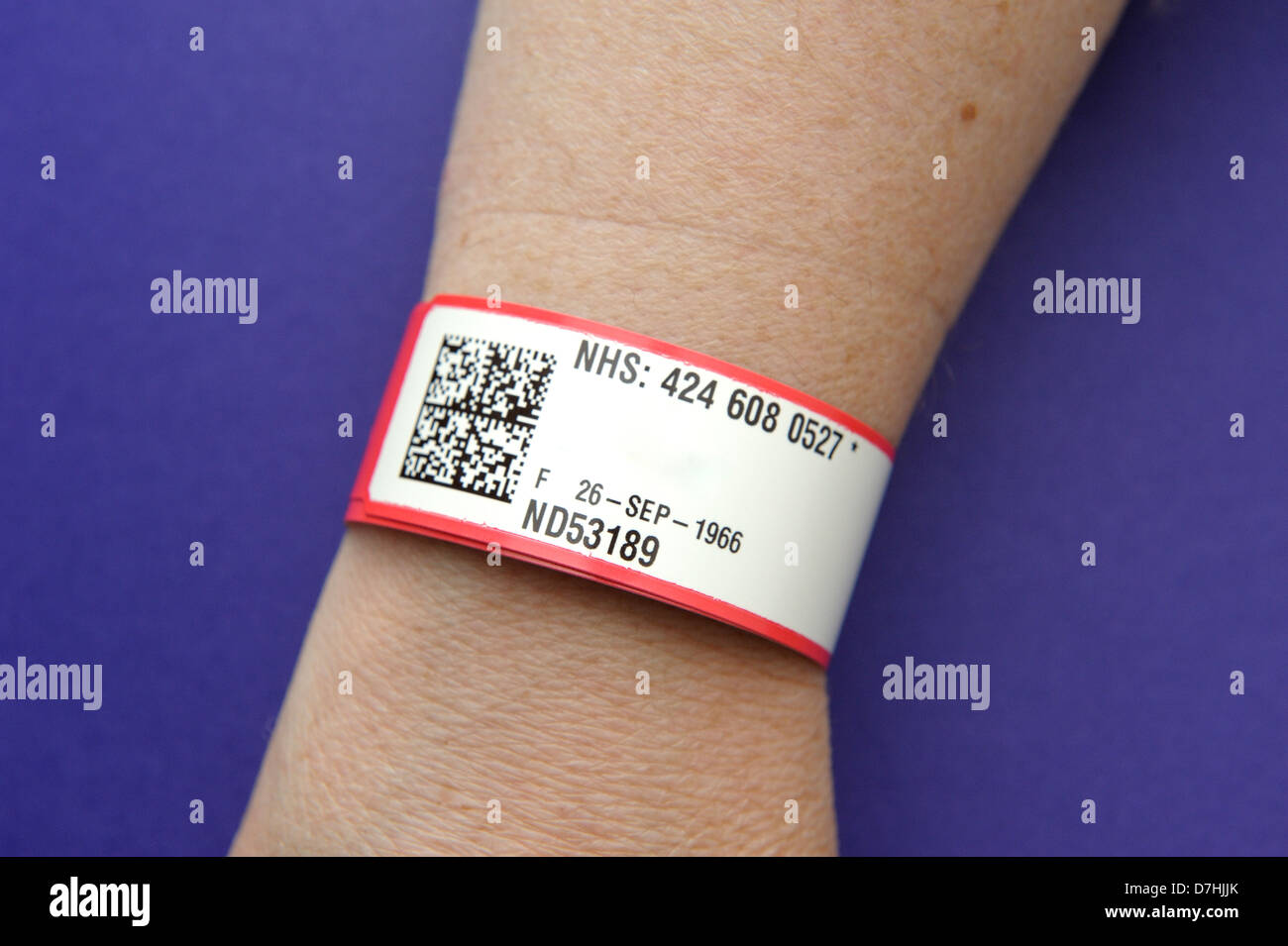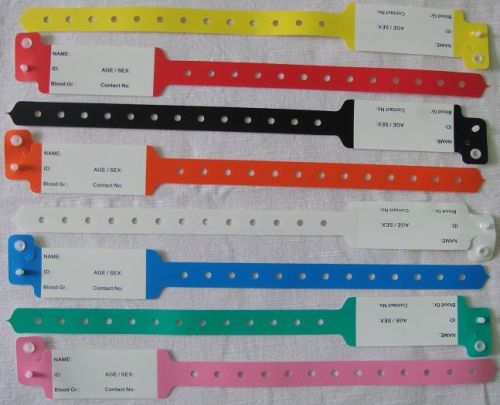Checking Out the Numerous Types of Patient Identification Band Made Use Of in Clinical Facilities
In the complex world of healthcare, the crucial duty of Patient Identification bands frequently goes undetected. These bands, differing from straightforward paper wristbands to sophisticated RFID bands, create the foundation of Patient safety and security procedures, ensuring precision in Patient Identification.
Comprehending the Value of Patient Identification Bands
While they may appear like plain accessories, Patient Identification bands play an essential role in clinical centers. These bands offer as an essential tool for validating Patient identity, protecting against clinical errors associated to misidentification. Patient Identification bands likewise aid in enhancing administrative tasks, ensuring precise record-keeping and billing.
Typical Paper Wristbands: Their Use and Limitations
Standard paper wristbands have been a staple in Patient Identification across different medical facilities. While their use prevails, they harbor certain constraints that might impact their effectiveness in Patient monitoring. This section will certainly concentrate on the range of their application and the inherent downsides connected with their usage.
Paper Wristbands: Use Range
In the world of Patient Identification, paper wristbands have long held an important duty. These bands are generally utilized in outpatient settings, where the Patient's stay is short-term. The wristbands consist of important info such as the Patient's name, day of birth, and an unique Identification number. This easy, yet reliable system, enables doctor to quickly and accurately recognize people, making sure the proper therapy is carried out. Paper wristbands are likewise made use of in emergency circumstances, where fast Identification is extremely important. Their use includes events like blood contribution drives and mass inoculation programs, even more stressing their flexibility. In spite of innovations in technology, the humble paper wristband stays a reliable and affordable option for Patient Identification in various medical care scenarios.
Limitations of Paper Wristbands
Despite their prevalent use, paper wristbands are not without their disadvantages. In addition, paper wristbands typically do not have the technological capabilities of more modern-day options, such as barcoding or RFID chips, restricting their capability to simply showing composed information. Paper wristbands can trigger discomfort or skin irritation to some people, specifically when used for extended durations.
Barcoded Wristbands: Innovations in Patient Identification
While Patient Identification has actually long been a critical facet of healthcare, the development of barcoded wristbands signifies a considerable jump forward. These bands take advantage of the simpleness of barcoding technology, enabling Patient details to be quickly scanned and accessed. They improve the rate and accuracy of Patient Identification, lowering the risk of medical errors connected to misidentification. Barcoded wristbands are cost-effective, simple to generate, and eliminate handwriting mistakes usual with hands-on systems. However, they are not without constraints. While they use renovations over typical bands, the barcode can end up being used or smudged, providing it unreadable. Regardless of this, barcoded wristbands stay a necessary tool in modern healthcare settings, representing the intersection of modern technology and Patient treatment.
Superhigh Frequency Identification (RFID) Bands: a Step Towards Futuristic Healthcare
The evolution of Patient Identification bands has caused the development of Radio Regularity Identification (RFID) Bands (patient identification band). These cutting-edge devices present key benefits for medical care facilities, offering an extra effective and technically progressed methods of Patient Identification. The execution of RFID in medical care is a considerable step towards a more advanced technique to Patient monitoring and security
Understanding RFID Bands

RFID Bands: Secret Benefits
Mainly, these bands enhance Patient safety and security by supplying precise, immediate Identification, therefore decreasing clinical errors. RFID bands can keep a substantial amount of Patient information, including clinical background and allergies, allowing customized treatment. Generally, RFID bands represent a considerable development in Patient Identification innovation, profiting both people and medical care service providers.
Executing RFID in Health Care
As we enter a highly advanced era, the implementation of RFID bands in medical care comes to be significantly essential. These bands provide a smooth way to track and recognize people, guaranteeing their safety and security and boosting performance in therapy procedures. RFID bands supply countless benefits over typical Identification approaches. They can keep a huge quantity of data, including the Patient's case history and treatment plans, which can be quickly accessed by health care providers. This information aids doctors make notified choices pertaining to the Patient's treatment strategy. Furthermore, RFID bands lower clinical mistakes by giving exact Patient Identification, which is vital in protecting against misdiagnosis or wrong medicine management. Therefore, the application of RFID bands is a substantial action towards improving Patient security and health care delivery.

Color-Coded Wristbands: Aiding in Quick and Accurate Medical Diagnosis
In the dynamic setting of a clinical facility, color-coded wristbands have actually become important tools for swift and specific Identification of a client's medical problem. These wristbands, used by clients, carry details shades that represent different clinical conditions or statuses. Red can suggest allergy threats, while yellow could signify a fall danger. This system is created to provide instant visual cues to doctor, boosting Patient safety and security and care top quality. In emergency scenarios, making use of these wristbands enables fast decision-making. However, the efficiency of color-coded wristbands relies on the harmony of color interpretation throughout healthcare organizations, requiring typical criteria for consistent application.
Techniques for Effective Execution and Management of Patient ID Bands
Accomplishing optimal use Patient Identification bands demands a well-structured technique for their execution and administration. The very first step involves training all health workers on the importance of correctly using and reviewing these bands. Second of all, medical facilities need to standardize making use of ID bands throughout all departments, guaranteeing uniformity and decreasing inconsistencies. Regular audits ought to be performed to validate adherence to plans and to remedy any type of variances. Patient education and learning is likewise crucial; clients should comprehend the objective of the bands and the need for their constant wear. patient identification band. Last but not least, it's crucial to have a back-up plan in position, such as barcode scanning or biometrics, to make sure that Patient Identification is never ever jeopardized.
Conclusion
Patient Identification bands are critical in clinical click this link facilities to guarantee security and accuracy. Conventional paper, barcoded, RFID, and color-coded wristbands each hold distinct benefits, varying from cost-effectiveness to advanced data storage space and immediate medical informs. Efficient execution and monitoring of these bands can considerably decrease clinical mistakes, improve performance, and enhance general Patient care. Hence, understanding and making use of these Identification tools is paramount for maintaining find more information high criteria in health care.
These bands, varying from simple paper wristbands to advanced RFID bands, develop the foundation of Patient safety methods, making certain accuracy in Patient Identification.The advancement of Patient Identification bands has actually brought regarding the introduction of Radio Regularity Identification (RFID) Bands. Generally, RFID bands stand for a considerable innovation in Patient Identification innovation, benefiting both clients and healthcare suppliers.
RFID bands minimize clinical mistakes by giving exact Patient Identification, which is critical in protecting against misdiagnosis or wrong medication administration. Patient education is likewise vital; individuals must recognize the objective of the bands and the demand for their consistent wear.